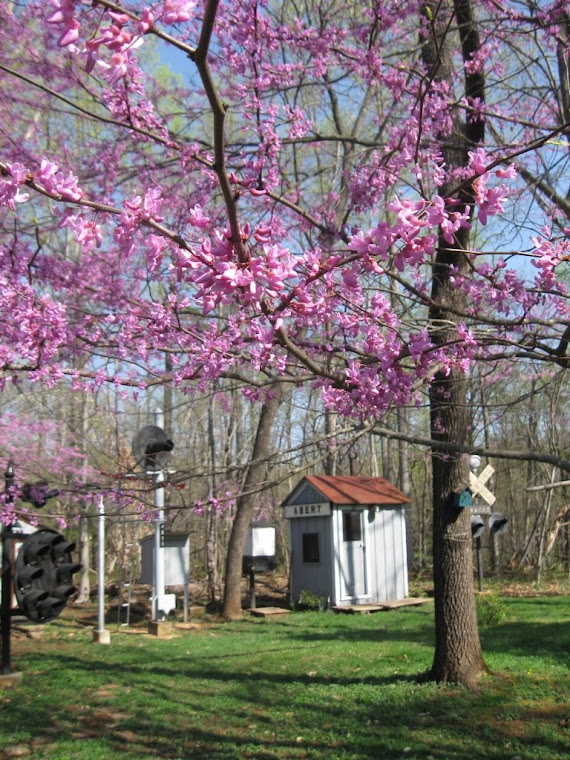
For the first time in scores of years, in May 2010, the C&O Watchbox from Abert has a coal stove, the correct one! Thanks for Tom Clay, a Burnside number Five was obtained. I cleaned, sanded off rust, repairied cracks and gave it a coat of "Stove Blackening." Correct 5" stove pipe will carry the smoke out the smoke jack on the roof, when it is fired. When the structure was built in 1942, the railroad attached steel plates to the corner walls and floor to protect the wood and also to reflect the heat.
Bobby and Judy Wade came for their first visit. Bobby grew up along the C&O at Abert; his father and grandfather worked in this actual C&O Watch Box! Bobby said he was taken back many years to his youth as he sat inside the small structure and recalled the furnishings. The coal stove was the same as when he played there as a youngster but missing now are a few wood boxes that were nested out of the way when not arranged together making a cot of sorts. The placement of the phone box was correct, he said, but a small wooden coal bunker was beside the shanty at its original location. Two lanterns are in Abert as they were when it was in operation, he noticed; one with a clear globe for illumination and another with a red globe to stop an approaching train in case of an emergency. Bobby said the Watch Boxes were placed five to six miles apart and that the watchmen walked both east and west to inspect the track and to meet the neighboring watchmen. The watchman to the east came from Reusens while the watchman from the west came from Holcomb Rock. The railroad had three houses for sectionmen at Abert, two close to the tracks and a third up a hallow. Other buildings at Abert included a store with a post office and a few private homes and farms at Abert. Abert was at the west end of a passing track and a spur track, or house track, was on the south side of the tracks. There was not a station but passengers could wait for one of the four passenger trains in a three sided shelter, which was common along the C&O at such rural locations. Bobby described how timber was cut on the hills behind the community and a sawmill made the lumber, which was shipped out on the C&O. An apple orchard also shipped from Abert. He remembers watching trains of troop cars in World War II passing slowly and soldiers pushing off cases of canned vegetables and processed meat for them.

No comments:
Post a Comment